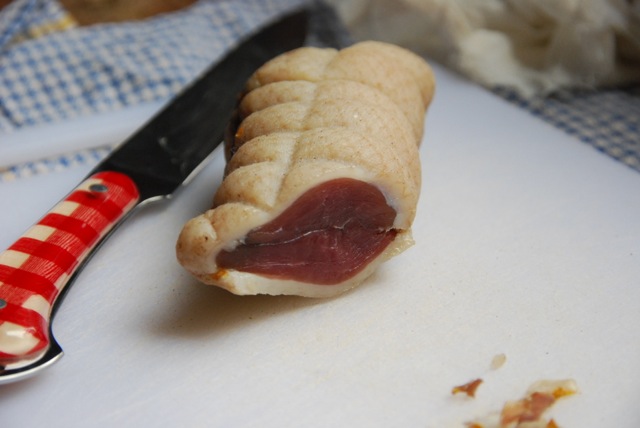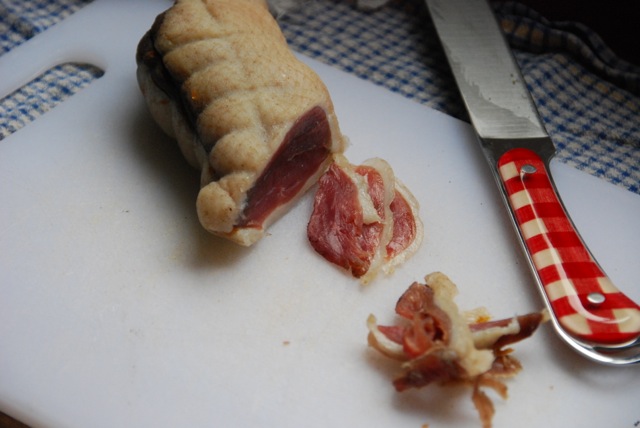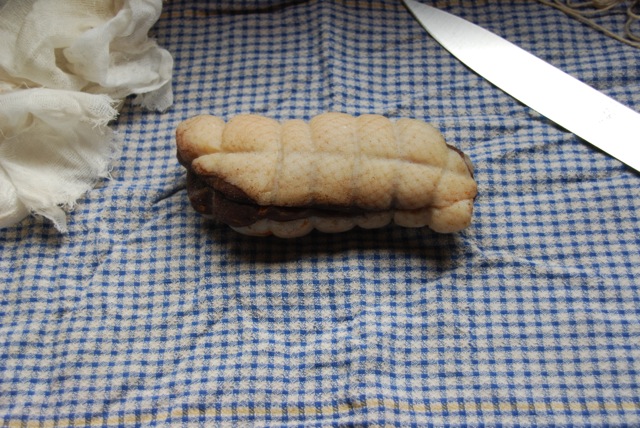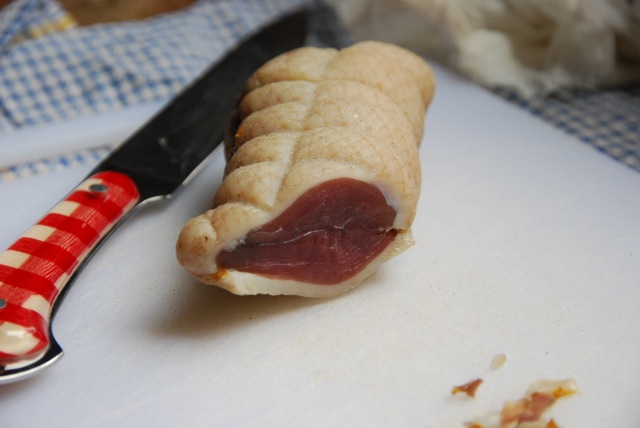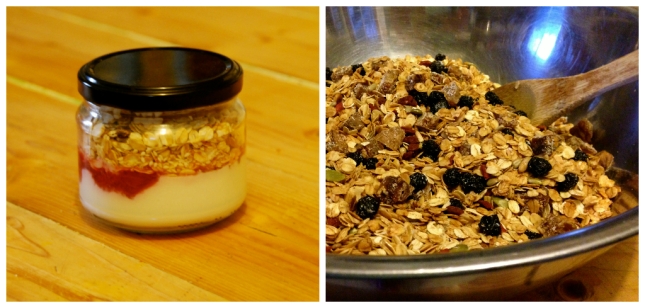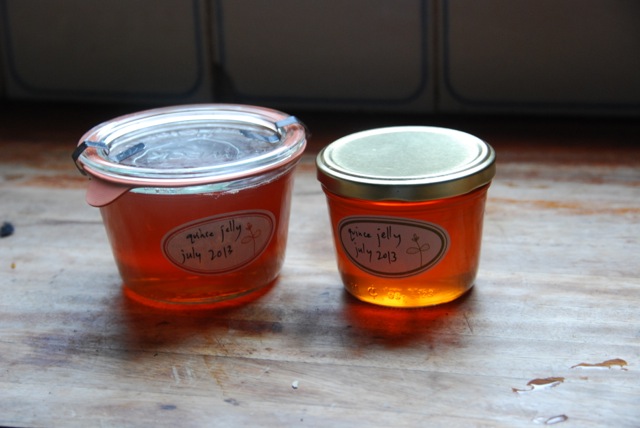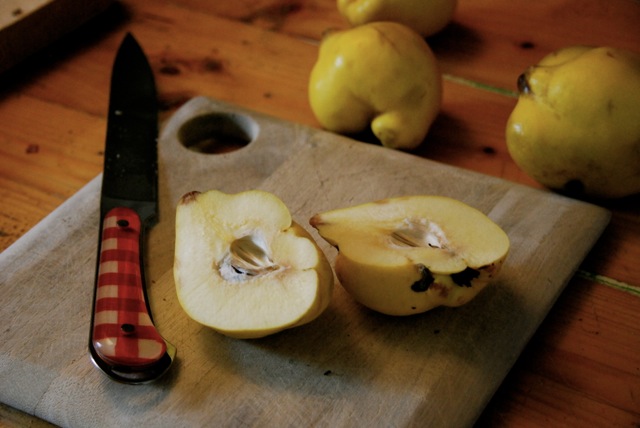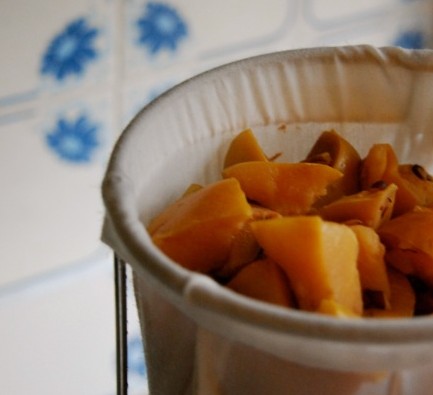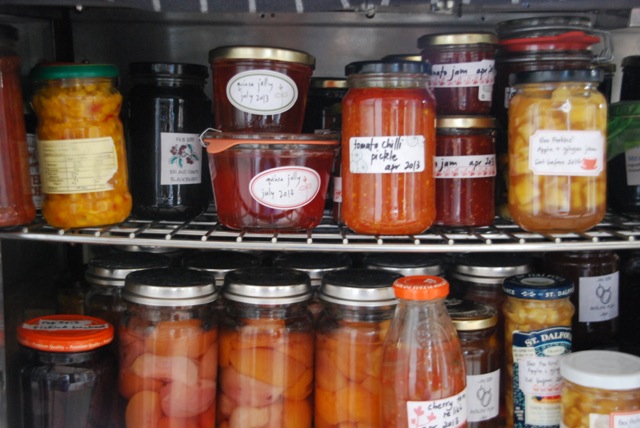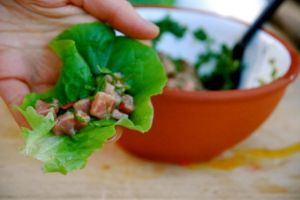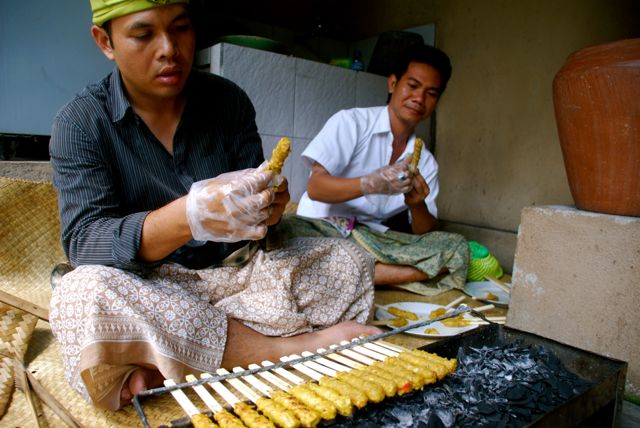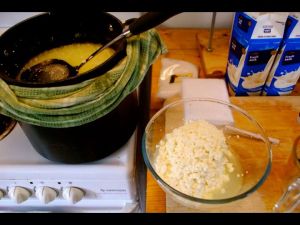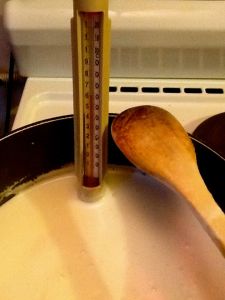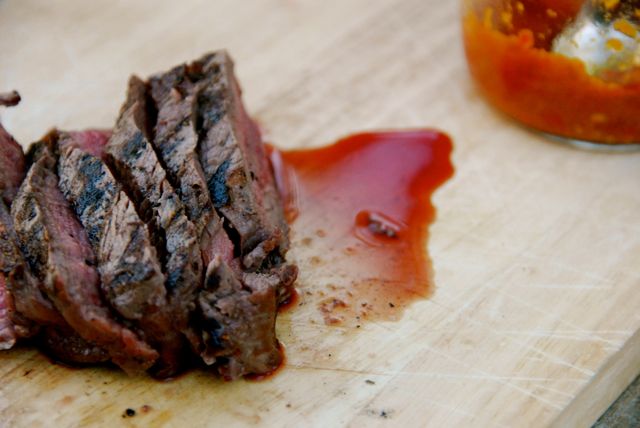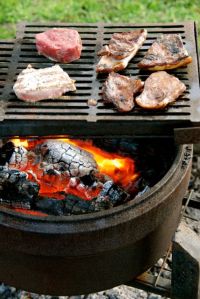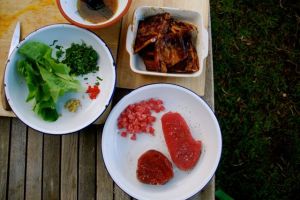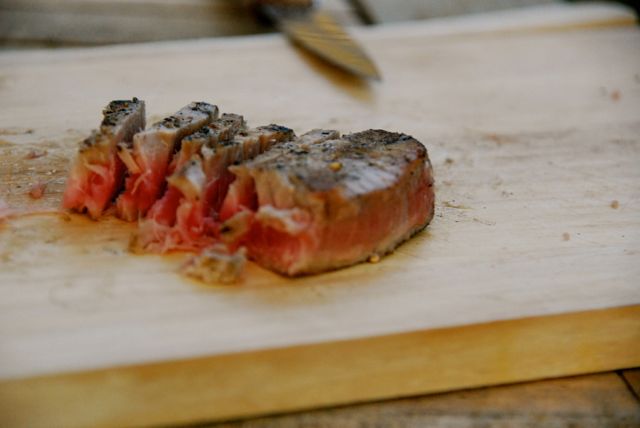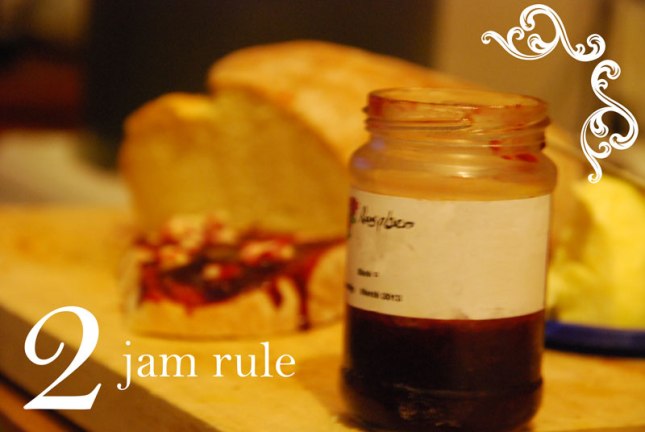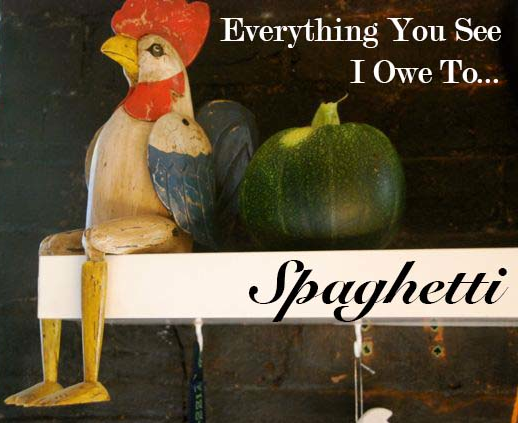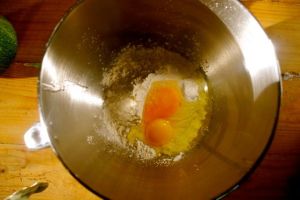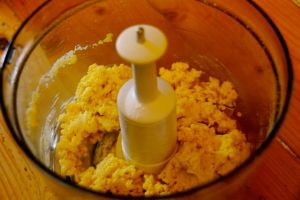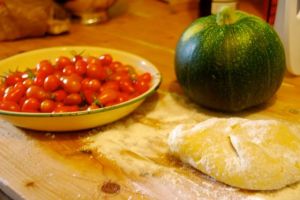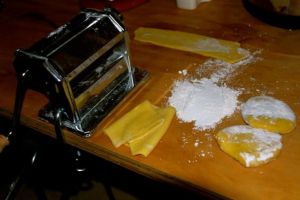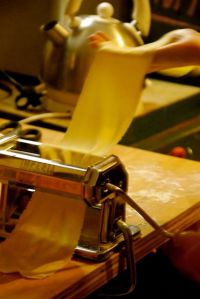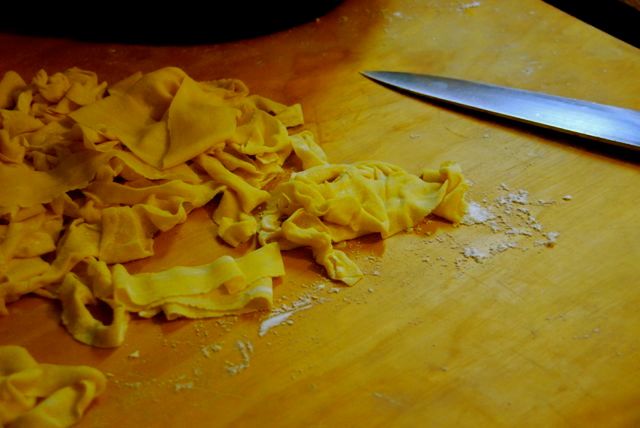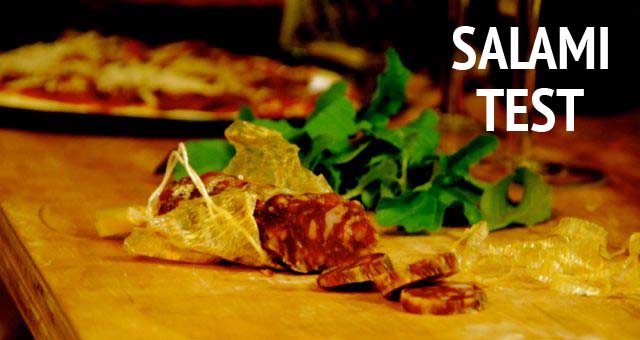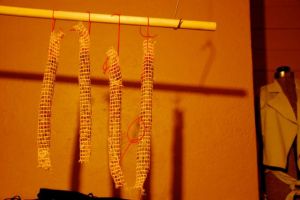After the salami success of rigoniman, I wanted to have a go at meat preserving myself. But because I’m a bit lazy, I wanted something simpler and quicker. Also because of the risk; I didn’t want to put in effort and weeks of waiting for a dodgy result. And mind the squids too.
From the back of my brain I recalled reading about the charcutepalooza blog project, which I suspected might help me choose an entry level meat product. ELMP. I landed on duck prosciutto. How’s that for some weird imagery.
The suggested recipe by Ruhlman was heavy handed on the salt, so I went googling to find an option that didn’t mean I had to buy salt. I found a really simple one by this guy from Master Chef (whose restaurant I’ve actually been keen to visit because of his whole-beast philosophy). We managed to have everything already in the house but the duck. The Queen Victoria Market helped with that.
Making duck prosciutto is supremely rewarding in its simplicity.
There is something lovely about cheesecloth and kitchen string.
After a handful of days and many curious squeezes, we unveiled a most impressive looking pair of duck boobs.
It looked right, it smelled right, it walked… No! It tasted right. I think. (Well, we’ve never eaten duck prosciutto before, so who knows.)
I have to be honest. I’m a little afraid if it. I only eat small portions at a time. It seemed suspiciously easy. The prosciutto smelt clean and meaty and spicy. We didn’t get sick, so that is an excellent result.
This is science though, so do your research and follow the rules! Trust the nose and be wary of any odd smells.
